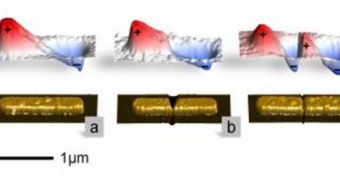An international scientific team, comprised of experts from Germany, the United States, and Spain, have managed to establish new methods of controlling light on the nanoscale, through the use of nano-antennas and also of some concepts from radio-frequency technology. The innovation could help create a new generation of highly sensitive biosensors and extremely fast photodetectors, much faster and accurate than existing ones.
The researchers, from the Max Planck Institute of Biochemistry, in Munich, the Harvard University, and the Centro de Fisica de Materiales of CSIC/UPV-EHU, in San Sebastian, have been led by Spanish expert Javier Aizpurua and have focused their efforts on developing a special kind of infrared antenna. The optical and infrared antenna varieties have very wide application ranges, from single-molecule spectroscopy to detector applications relying on the signal-to-noise type. They are also able to focus light or infrared radiation to a very small dot, just a few nanometers in diameter.
This level of magnification cannot be achieved by conventional antennas, and the molecules, or any other type of matter, that are placed in these “hot spots” can basically interact with light. And interaction equals influence, so the team have decided to not only subject the antennas to the influence of light, but to also influence light by tweaking the way in which the antenna was originally designed. The scientists have had in mind the ultimate goal of their efforts, the creation of compact and integrated nanophotonic devices.
“By monitoring the near-field oscillations of the different antennas with our novel near-field microscope, we were able to directly visualize how matter inside the gap affects the antenna response. The effect could find interesting applications for tuning of optical antennas,” CIC nanoGUNE Consolider research institute Nanooptics group leader Rainer Hillenbrand explains. “By extending circuit theory to visible and infrared frequencies, the design of novel photonic devices and detectors will become more efficient. This bridges the gap between these two disciplines,” Javier Aizpurua adds.

 14 DAY TRIAL //
14 DAY TRIAL //